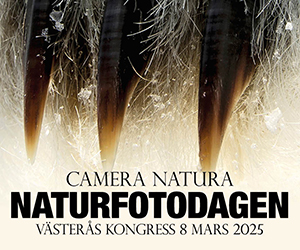Ja det är ju min uppfattning också som sagt.
Sedan faller det ju på sin egen orimlighet att Sony skulle ställa till det så för sig med sina ARW att man tappade så mycket bildkvalitet i RAW-filen att det påverkade bildkvaliteten negativt. Speciellt när man gjort sitt yttersta i just A7r-modellerna att ta fram en kamera som har så bra detaljåtergivning och DR det bara är möjligt att få med den tekniknivå vi har idag. Jag tror de har gjort väldigt noga överväganden i de kompromisser de ev. har gjort.
Vad man kan få ut ur är A7r och säkert i ännu högre grad med A7r II, är ju rent enastående med de ARW vi har redan idag. Skulle Sony ha skitit på sig helt i det blå skåpet så som en del hävdar, så borde vi nog blivit varse detta långt tidigare än idag och så har faktiskt inte varit fallet.
Trots att Sony förmodligen komprimerat bort en del data även ur A7r-filerna så har det varit svårt att se att A7r skulle vara märkbart sämre i exv. de tester jag kommer ihåg att dPreview gjorde mellan A7r och bl.a. Nikons D800E. Istället var fallet det omvända! Så då kan man väl fråga sig varför inte de andra kamerorna var märkbart bättre i detta test om vi misstänker att de inte använt förstörande komprimering.
Så här skriver dPreview: på
http://www.dpreview.com/reviews/sony-alpha-a7R/16
The good news is we were overwhelmingly pleased with the images we captured with the Sony a7R. Color is good, auto white balance most often gets it right, and Raw files leave plenty of opportunity for adjustment in post. And did we mention the extraordinary detail we get from the a7R's files? It's really enjoyable to peer around in the images afterward just to see what we captured.
I Conclusions:
"At low ISOs, noise is comparable to full-frame SLRs such as the Canon EOS 5D Mark III and Nikon D800, keeping plenty of detail until the very highest sensitivities. Sony compresses its Raw files in a lossy and non-optional manner, which raises some concerns about a camera so likely to be bought by demanding Raw shooters. We wish Sony allowed users to save an uncompressed and un-suppressed Raw file, but we didn't encounter the theoretical limitations imposed by Sony's methods to the extent that we found it to be a problem.
One advantage to the Sony a7R is that its high-resolution sensor is matched by the high optical quality of the native FE lenses, providing confidence that cropped images can still make impressive enlargements. We were pleasantly surprised at the sharpness of the two FE primes (35mm F2.8, 55mm F1.8). The 28-70mm F3.5-5.6 makes a few compromises, but produces respectable results for a kit lens (it's only available in kits with the a7 in some markets and it wouldn't be our first choice for making full use of the a7r's capabilities). The 24-70mm F4 is noticeably better, and clearly worthy of its higher price."
.. och här under Image Quality compared i Daylight och "Low light respektive) med Canon 5D MK III och Nikons D800E som ju sägs dela sensor med Sony A7r
"The amount of fine detail captured by the a7R is very impressive at low sensitivities, as you'd expect from a camera with no low-pass filter. At ISO 1600 there's really no drop in quality, and the a7R suppresses moiré in JPEGs very well, especially compared to the Nikon D800E. You'll start to see the effects of noise reduction kick in at ISO 3200 and 6400. Even so, the camera is still capturing a lot of fine detail at the latter sensitivity.
At ISO 12800 that fine detail starts to disappear, and you begin to see one of the issues we've noticed with the a7R, related to its context-sensitive noise reduction feature. As you can see here, the center of the square is very 'flat' from heavy noise reduction, while near the edge the opposite is true. It's not as bad as on the a7, but it's still noticeable. While you can still see this phenomenon at print sizes, you really need to be looking for it.
One of the first surprises we saw when switching to Raw was (again) how little moiré there was, especially compared to the Nikon D800E, which is believed to use the same sensor as the a7R. At ISO 800, you start to see some luminance and chroma noise, but not much. Color noise becomes more of an issue at ISO 6400, but there's still plenty of fine detail left to work with. Things get worse one stop higher, but again, there's enough detail to work with. At the top sensitivity of ISO 25600, there's not much detail left, but if you downsize to what we call 'web size' (3MP), the image is still usable. If you compare the a7R to the Nikon D800E and Canon EOS 5D III, you'll find that it's very competitive."
"JPEG performance in low light isn't markedly different from its performance in good light. At ISO 3200 you'll see that the a7R is neck-and-neck with the much larger Canon 5D III and Nikon D800E DSLRs. You can get a feel for how the camera's context-sensitive noise reduction system works in this example. Notice how the low contrast area in the back looks very smooth, while the feather in the foreground retains its detail. At ISO 12,800 you can see the downside of this NR system - note how 'fuzzy' the lines around the square appear. While you can still see it when the image is reduced to 8 megapixel, it's not as obvious as it is on the 24 megapixel a7. One thing you won't find in these JPEGs is chroma (color) noise - Sony has really squashed it in JPEGs.
As with JPEGs, luminance noise is low and detail is high at low-to-middle sensitivities. Just as in good light there is some moiré, though (again), it's not as bad as on the D800E. Color noise starts to pick up at ISO 3200, but it doesn't start eating detail until ISO 6400. At ISO 12800 there's still some detail, but when you hit 25600 there's not much left, even if you downsize to 3 megapixels."
Så jag tycker faktiskt att det finns ett visst fog för att se detta "problem" mer som en akademisk fråga och möjligen en marknadsblunder. Jag har svårt att se komprimeringen av ARW-filerna som ett verkligt problem vid praktisk efterbehandling och i utskrifter. Så vad är det då vi debatterar tro innan vi ens sett A7r III-filer från en produktionskamera??






